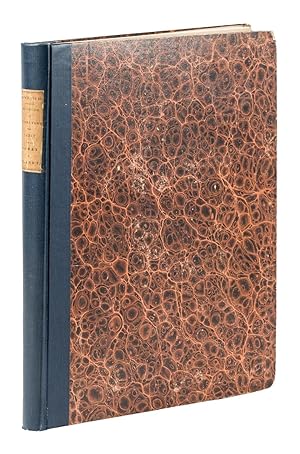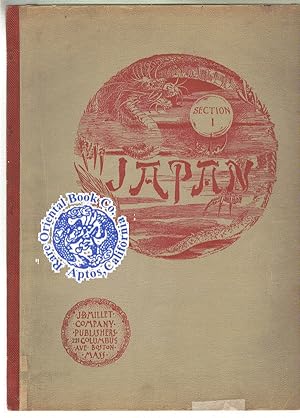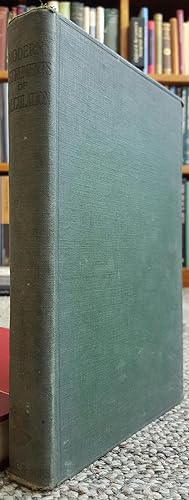A History of Mathematics an Introduction 2 Ed (37 results)
Product Type
- All Product Types
- Books (37)
- Magazines & Periodicals
- Comics
- Sheet Music
- Art, Prints & Posters
- Photographs
- Maps
-
Manuscripts &
Paper Collectibles
Condition
Binding
Collectible Attributes
- First Edition (15)
- Signed (2)
- Dust Jacket (5)
- Seller-Supplied Images (18)
- Not Printed On Demand
Free Shipping
Seller Location
Seller Rating
-
INTRODUCTION TO THE FOUNDATIONS OF MATHEMATICS (2nd ed.)
Published by Wiley, 1965
ISBN 10: 0471944157ISBN 13: 9780471944157
Seller: The Book Abyss, St. Paul, MN, U.S.A.
Book
Hardcover. Condition: Near Fine. No Jacket. 2nd Edition. Please see any and all photos connected with this listing. Cover and spine are like new. No dog-eared corners. Solid Binding. All pages intact and legible. Clean. No store stamps. No highlights or underlines. --- --- This classic undergraduate text by an eminent educator acquaints students with the fundamental concepts and methods of mathematics. In addition to introducing many noteworthy historical figures from the eighteenth through the mid-twentieth centuries, the book examines the axiomatic method, set theory, infinite sets, the linear continuum and the real number system, and groups. Additional topics include the Frege-Russell thesis, intuitionism, formal systems, mathematical logic, and the cultural setting of mathematics. . .See photos for additional content. . .
-
Hermann von Helmholtz and the Foundations of Nineteenth-Century Science , (1. Physiologist : Helmholtz and the German medical community - Experiment, quantification and discovery : Helmholtz's early physiological researches, 1843-1850 - The eye as mathematician : Clinical practice, instrumentation, and Holemholtz's construction of an empirical theory of vision - Consensus and controversy : Helmholtz on the visual perception of space - Innovation through synthesis : Helmholtz and color research - Sensation of tone, perception of sound, and empiricism : Helmhotz's physiological acoustics - 2. Physicist : Helmhotz's Ueber die Erhaltung der Kraft : The emergence of a theoretical physicist - Electrodynamics in context : Object states, laboratory practice, and anti-romanticism - Helmholtz's instrumental role in the formation of classical electrodynamics - Between physics and chemistry : Helmholtz's route to a theory of chemical thermodynamics - Helmholtz's mechanical foundation of thermodyna
Published by University of California Press , California Studies in the History of Science, 1993
Seller: Librairie Philoscience, Malicorne sur Sarthe, France
31 black and white illustrations 1993's edition Book condition, Etat : Très Bon hardcover, editor's binding, under editor's original purple dust-jacket, illustrated by a portrait of Hermann von Helmholtz fort et grand In-8 1 vol. - 695 pages Contents, Chapitres : Contents, List of Illustrations, Acknowledgments, Contributors, Abbreviations, Chronological listing of the Principal Events and Publications of Helmholtz's Life and Career, xxix, Text, 666 pages - D. Cahan : Introduction, Helmholtz at the borders of science - 1. Physiologist : Arleen Tuchman : Helmholtz and the German medical community - Kathryn M. Olesko and Frederic L. Holmes : Experiment, quantification and discovery : Helmholtz's early physiological researches, 1843-1850 - Timothy Lenoir : The eye as mathematician : Clinical practice, instrumentation, and Helmholtz's construction of an empirical theory of vision - R. Steven Turner : Consensus and controversy : Helmholtz on the visual perception of space - Richard L. Kremer : Innovation through synthesis : Helmholtz and color research - Stephan Vogel : Sensation of tone, perception of sound, and empiricism : Helmhotz's physiological acoustics - 2. Physicist : Fabio Bevilacqua : Helmhotz's Ueber die Erhaltung der Kraft : The emergence of a theoretical physicist - Jed Z. Buchwald : Electrodynamics in context : Object states, laboratory practice, and anti-romanticism - Walter Kaiser : Helmholtz's instrumental role in the formation of classical electrodynamics - Helge Kragh : Between physics and chemistry : Helmholtz's route to a theory of chemical thermodynamics - Günter Bierhalter : Helmholtz's mechanical foundation of thermodynamics - 3. Philosopher : Michael Heidelberger : Force, law, and experiment : The evolution of Helmholtz's philosophy of science - Robert DiSalle : Helmholtz's empiricist philosophy of mathematics : Between laws of perception and laws of nature - Gary Hatfield : Helmholtz and classicism : The science of aesthetics and the aesthetics of science - David Cahan : Helmholtz and the civilizing power of science - Bibliography and Index - Hermann Ludwig Ferdinand von Helmholtz est un scientifique (physiologiste et physicien) prussien, né le 31 août 1821 à Potsdam et mort à Berlin-Charlottenburg en 1894. Il a notamment apporté d'importantes contributions à l'étude de la perception des sons et des couleurs ainsi qu'à la thermodynamique. - Helmholtz a vécu à une époque propice à développer l expérimentation grâce à un arsenal d instruments de plus en plus performants, qui prolongent, démultiplient, amplifient, accélèrent le regard des scientifiques sur la nature des phénomènes (et dans ce cas précis, des phénomènes sonores) pour mettre en évidence les explications de certaines observations : la technique a permis de transcrire sous une forme objective des phénomènes inexpliqués ; ainsi, l acoustique progresse considérablement et Helmholtz fonde l'optique physiologique et la psychophysique. (source : Wikipedia) near fine copy, no markings, the dust-jacket is complete and near fine, minor folding tracks on the spine, the bottom part of the D.J. is very lightly torn on less than 0,5 cms, quite nothing, inside is fine, a very nice copy of this masterwork on Helmholtz 1300.
-
A concise history of classical Sanskrit literature.
Published by Delhi : Motilal Banarsidass, 1998
Seller: Fundus-Online GbR Borkert Schwarz Zerfaß, Berlin, Germany
Book
Condition: Sehr gut. Reprint of the 2nd. ed. Calcutta 1960. 220 S. Umschlag leicht berieben, sonst gutes Exemplar. - This book contains an elaborate account of all branches of Classical Sanskrit Literature on the basis of literary, epigraphical and numismatical sources. It is divided into 23 chapters, each chapter dealing with a particular topic arranged chronologically. Chapters I-V are on the Epics, Puranas, Tantras, Post-Epic and Inscriptional poetry. Chapter VI deals with Early Buddhist works in Sanskrit. Chs. VII-XII are related to the Court Epics, Drama, Poetry, Historical Writings, Prose and Campu literature. Chs. XIII-XXI discuss Grammar, Poetics, Dramaturgy, Metrics, Lexicography, Civil and Religious Laws, Politics, Erotics, Medicine, Astronomy, Mathematics and Astrology. Chs. XXII-XXIII treat miscellaneous sciences as well as Hindu Philosophical thought. The book is documented with a critical apparatus. Besides notes and references it has an illuminating Introduction and Index of authors and works. Sprache: Englisch Gewicht in Gramm: 550 Originalleinen mit Schutzumschlag.
-
Guide to Discrete Mathematics: An Accessible Introduction to the History, Theory, Logic and Applications (Texts in Computer Science)
Published by Springer, 2022
ISBN 10: 3030815900ISBN 13: 9783030815905
Seller: Books Puddle, New York, NY, U.S.A.
Book
Condition: New. 2nd ed. 2021 edition NO-PA16APR2015-KAP.
More buying choices from other sellers on AbeBooks
New offers from US$ 48.51
-
Innocentia Victrix: Siue Sententia Comitiorum Imperii Sinici pro Innocentia Christianae religionis. = Vitória da inocøencia, ou snetença das Assembleias do Império Chinês em prol da inocência da Religião Christã. Documenta, 2.
Published by Lisbon, Biblioteca Nacional / Instituto Português do Oriente, 1999., 1999
Seller: Richard C. Ramer Old and Rare Books, New York, NY, U.S.A.
8° and small folio (29.5 x 18.5 cm.) , original printed wrappers. and publisher's boards. As new. 113, (1) pp.; (1, 2), 43, (1) ll. One of 1,000 sets. *** The octavo volume is a study of the work originally printed in Canton in 1671. It has an introduction by Horácio P. Araújo. The folio volume is a facsimile reprint of the third in a series of eleven books printed between 1662 and 1718 from xylographic blocks, in various cities of China, under Jesuit auspices. All books printed in China by the Jesuits are rare. Europeans were amazed that the Jesuits were able to produce books in Chinese; such books have attained both a mythic and mystic character, and are highly valued by collectors of books about the Far East in general and China in particular, as well as collectors of Jesuit material.This extraordinary document prints the text of an imperial rescript promulgated at Peking, regarding toleration for the Christian religion. It is printed in old, modern, and cursive Chinese characters, with phonetic transcriptions and a Latin translation. Also included are mathematical calculations and astronomical observations by the Jesuits that correct errors made by Chinese astronomers in their calculations for the calendar. Several references are made to the Jesuits? astronomical observatory in Peking (2v, 7r-v, 16r-v, 17v, 23v, 28v, 40r) and to the astronomical activities of Matteo Ricci, Schall von Bell and especially Ferdinand Verbiest.The Jesuit mission suffered a severe setback in 1664, when imperial regents moved against them, resentful of the influence at court of Ricci's successor, Adam Schall von Bell. The old charge that the missionaries were emissaries preparing the way for a Portuguese occupation of the country was revived, and Schall von Bell, already 73 years old, was condemned to death along with five Christian converts.Schall was reprieved and died a natural death the following year. But in the meantime, the five Chinese had been executed and most of the thirty-eight priests in China (including Gouvea) were collected in Canton so that they could be expelled from the country. Once again the wind changed. In 1667, the great Emperor K'ang-Hsi, then aged fourteen, began to take a hand in the affairs of government. He soon made friends with Schall's colleague and successor, the Flemish Father Ferdinand Verbiest, who had been imprisoned at Peking and who shared the astronomical and scientific interests of the teenage Chinese Emperor. This work is generally attributed to the Portuguese Father Gouvea, who was vice-provincial heading the group of Jesuits imprisoned at Canton from 1667 to 1671, but it may have been by the Italian Padre Lubelli, or the Fleming Father François de Rougement. The wood blocks from which it was printed were possibly cut by Father Intorcetta's protége Paul, as he must have returned from Goa about this time.*** See Backer-Sommervogel III, 1637. Boxer, "Some Sino-European Xylographic Works, 1662-1718," 3. Cordier Bibliotheca Sinica II, 822-5; Imprimérie Sino-Européene en Chine, 126. Braga, The Beginning of Printing in Macau, p. 12. Lilly Library, Exotic Printing and the Expansion of Europe, 1492-1840, 86. Reiss & Auvermann, Auction 40: Travel and Exploration, Portugal and Spain (3-4 April 1989), 541 (that copy, with the repairs to its upper margin and upper outer corner, sold for an aggregate price of DM 46.000,00, the equivalent of approximately US$ 27,000.00 at the time, to the late Portuguese bookseller J.A. Telles da Sylva). Brunet III, 441. See also Pfister, Notices biographiques et bibliographiques sur les Jésuites de l'ancienne mission de Chine, 1552-1773 (Shanghai, 1932).
-
Mathematics --- new curriculum Hundred Questions (Author: Hu Guang antimony) (Price: 18.00) (Publisher: Beijing Normal University Press) (ISBN: 9787303075171)(Chinese Edition)
Published by Beijing Normal University Press, 2000
ISBN 10: 7303075178ISBN 13: 9787303075171
Seller: liu xing, Nanjing JiangSu, JS, China
Book
paperback. Condition: New. Ship out in 2 business day, And Fast shipping, Free Tracking number will be provided after the shipment.Paperback. Pub Date :2005-09-01 Pages: 194 Publisher: Beijing Normal University Press title: mathematics --- new curriculum Hundred Questions List Price: 18.00 yuan Author: the Hu Guang antimony ed Press: Beijing Normal University Press Date :2005-9-1ISBN: 9787303075171 Words: 210000 Page: 194 Edition: 1 Binding: Paperback: Editor's Summary Since September 2001. thousands of educators with a high degree of historical responsibility and a huge enthusiasm into the eighth after the founding of the basic education curriculum reform. The past few years. people seriously reflect on the courage to practice. bold innovation. gain experience. lessons learned. to the combination of the new curriculum ideas and teaching practice. has made remarkable achievements. In the same time. the reform also encountered this kind of problem. to be continued in-depth study. The focal point of the course curriculum. the hot issues and difficult issues. Beijing Normal University Press invite national curriculum standards formulated experts. the writing team for the new curriculum materials. teaching and research staff of the new curriculum experimental zone known line teachers authoritative research team composed surveys collected. careful study. several drafts. the gradual introduction of the new curriculum Hundred Questions series began in the fall of 2005 for the country. Hundred Questions new course Books based on the current situation of the teaching of the curriculum reform. a review of the essential rules of the ancient and modern teaching and adopt a pragmatic. innovative. pragmatic approach. a comprehensive and systematic review of primary and secondary school curriculum reform combing. especially for first-line teaching The teachers appear widespread concern and the problems faced by the answers and discussion. Bentaocongshu rich content. both summed up the experience of their predecessors. and creative new insights; both theoretical elucidation. there are specific recommendations; typical case. review pertinent; layman language. humor. can solve problems met. can prepare lessons Reference is a good helper for the majority of teachers and teaching and research staff. Reading Bentaocongshu. related argument. logical thinking and enjoy the interesting but also appreciate the art of teaching and educating. Beijing Normal University has been committed to the exploration of China's basic education curriculum reform and practice. and is willing to continue to share the pain of the challenges posed by the curriculum reform and beyond the music along with the majority of the education sector counterparts. What directory [Course Objectives] Primary Mathematics Teaching overall objective? Teaching how to achieve. What is the goal of knowledge and skills. and what is the process of goal? Teaching how to embody. Implementation of the mathematics curriculum standards diversified teaching objectives. basic knowledge is weakened. Mathematics curriculum standard goals. students polarization phenomenon seriously than in the past. and how to do. The [teaching behavior] how to understand the mathematics teaching math activities math in the new curriculum. the role of teachers is? How to play a good role mathematics activities how to organize a more orderly and effective organization of math activities to take up teaching time. how to do lesson enough the Taipan amount of classroom teaching. how to organize the math activities and how to help all students to actively participate in the new curriculum of math activities teaching mode change how creating interesting problem situations. so that students get a good emotional experience activities for rural students. how the new curriculum [learning] Why improve the way students learn how students' learning diversification how to organize students to independently explore cooperation and exchange activities how to.
-
9787302294702 econometric(Chinese Edition)
ISBN 10: 7302294704ISBN 13: 9787302294702
Seller: liu xing, Nanjing JiangSu, JS, China
Book
paperback. Condition: New. Ship out in 2 business day, And Fast shipping, Free Tracking number will be provided after the shipment.Paperback. Pub Date :2012-08-01 Pages: 238 Publisher: Tsinghua University Press title: econometrics Original Price: 29.80 yuan Author: oxygen - glucose deprivation waiting Publisher: Tsinghua University Press Publication Date :2012-8- the 1ISBN: 9787302294702 words: 337.000 yards: 238 Revision: 1 Binding: Paperback: 16 Weight: Editor's Choice econometrics around students practical measurement modeling capabilities. and strengthen the the econometric theory the intuitive. economic base. so students easy to understand and master the basic knowledge and methods of econometrics. readable and clear; The book focuses on the econometrics statistical ideas and methods based on mathematical derivation and calculus fade; book is from a practical point of view. the column There are a large number of case studies. from simple to difficult. from shallow and deep. and details on how to apply the various models and methods in econometrics; Britannica emphasis on computer software metering method implemented in econometric theory and methods introduced after tight follow the software how to use these methods. to facilitate the reader to learn how to use these econometric methods. so that students' learning by in middle school. and thus can operate. Summary of Econometrics is based on economic theory. mathematical. statistical methods. tools. a cross-discipline of economics. mathematics. statistics. and computer science. Oxygen - glucose deprivation. Guoqiu Li. the Human. Gu Feng Juan ed econometrics expand around the econometric modeling of the whole process. econometrics focuses elaborate on how to use econometric modeling of economic phenomena or laws to solve actual economic problems. Contents Chapter 1 Introduction 1.1 1.1.1 of the history and development of econometrics econometrics origin 1.1.2 measurement of the position and role of the meaning of economics 1.2 econometrics 1.2.1 and related disciplines relationship 1.2.2 econometric school status 1.2.3 econometric modeling 1.2.4 econometric analysis of the limitations of econometric research steps 1.3 1.4 how learning and applied econometrics 1.5 EViews use Profile 1.5.1 file and its establishment of 1.5 basic operation 1.5.3 Data Analysis .2 sequence object description of the sequence of the commonly used operation 1.5.4 Statistical Analysis Exercises 1 Chapter 2. a linear regression model 2.1 one yuan linear regression Overview 2.1.2 2.1.1 relationship between variables regression model Introduction 2.1.3 one yuan linear regression model Introduction 2.2 One linear regression model parameter estimation 2.2.1 least squares estimation method 2.2.2 2.2.3 the nature of the least squares estimator maximum likelihood estimation method 230 one yuan linear regression models of statistical tests 2.3.1 goodness of fit test - 2.3.2 parameter model to evaluate the significance test 2.3.4 Parameters 2.3.3 model overall significance test interval estimate 2.4 one yuan linear regression model 2.4 .1 point value forecast 2.4.2 interval forecast 2.5 one yuan linear regression model computer exercises 2 Appendix Gauss-Markov theorem Chapter 3. multiple linear regression model 3.1 multiple linear regression model Overview 3.1.1 model The basic form of 3.1.2 the basic assumptions of the model of the 3.2 multiple linear regression model parameter estimation 3.2.1 ordinary least squares estimation 3.2.2 Maximum Likelihood Estimation 3.2.3 Moment estimated the 3.2.4 sample size 3.3 multiple linear regression model statistical tests 3.3.1 3.4 multiple linear regression model goodness of fit test - Model Evaluation 3.3.2 equation overall linear significant test 3.3.3 variables significant test 3.3.4 parameter interval estimation 3.4 .1 point value predicted 3.4.2 intervals. forecast of more than 3.5 yuan linear regression model computer exercises 3 Chapter 4 nonlinear model 4.1 can be linearized nonlinear.
-
THOMAS REID'S 'INQUIRY'. The Geometry of Visibles and the Case for Realism with a new Afterword
Published by Stanford University Press, Standford, 1989
ISBN 10: 0804715041ISBN 13: 9780804715041
Seller: Douglas Books, Tunbridge Wells, United Kingdom
Book
Black Cloth. Condition: Fine. Dust Jacket Condition: Fine. 2nd ed. (1st-1974). unpag.prelims+xix (Foreword and Introduction)+160; both book and jacket virtually pristine with no obvious faults, will add protective sleeve to jacket when ordered. This is the prefered edition as it contains the author's Afterword in which he discusses soem modifications to the position he takes in the original edition. Note: quoted shipping rates are calculated for 500-700 gram net weight, cost will be modified up or down as appropriate outside this range. Size: 15.5 Cms x 23.5 Cms.
-
Jacob Steiner's Geometrical Constructions with a Ruler Given a Fixed Circle with Its Center. Translated from the First German Edition (1833) by Marion Elizabeth Stark. Edited with an Introduction and Notes by Raymond Clare Archibald.
Published by New York: Scripta Mathematica, Yeshiva University, 1950., 1950
Seller: Ted Kottler, Bookseller, Redondo Beach, CA, U.S.A.
Book First Edition
Hardcover. Condition: Very Good. No Jacket. 1st Edition. First Edition in English. Frontispiece, 2 leaves, 88 pp; 25 figs. Original cloth. An ex-library copy with the usual markings, else Very Good+. D.S.B. XIII: 18. Scripta Mathematica Studies, no. 4.
-
Analysis by Its History
Published by Springer New York, 2008
ISBN 10: 0387770313ISBN 13: 9780387770314
Seller: AHA-BUCH GmbH, Einbeck, Germany
Book
Taschenbuch. Condition: Neu. Druck auf Anfrage Neuware - Printed after ordering - . . . that departed from the traditional dry-as-dust mathematics textbook. (M. Kline, from the Preface to the paperback edition of Kline 1972) Also for this reason, I have taken the trouble to make a great number of drawings. (Brieskom & Knorrer, Plane algebraic curves, p. ii) . . . I should like to bring up again for emphasis . . . points, in which my exposition differs especially from the customary presentation in the text books: 1. Illustration of abstract considerations by means of figures. 2. Emphasis upon its relation to neighboring fields, such as calculus of dif ferences and interpolation . . . 3. Emphasis upon historical growth. It seems to me extremely important that precisely the prospective teacher should take account of all of these. (F. Klein 1908, Eng. ed. p. 236) Traditionally, a rigorous first course in Analysis progresses (more or less) in the following order: limits, sets, '\* continuous '\* derivatives '\* integration. mappings functions On the other hand, the historical development of these subjects occurred in reverse order: Archimedes Cantor 1875 Cauchy 1821 Newton 1665 . ;::: Kepler 1615 Dedekind . ;::: Weierstrass . ;::: Leibniz 1675 Fermat 1638 In this book, with the four chapters Chapter I. Introduction to Analysis of the Infinite Chapter II. Differential and Integral Calculus Chapter III. Foundations of Classical Analysis Chapter IV. Calculus in Several Variables, we attempt to restore the historical order, and begin in Chapter I with Cardano, Descartes, Newton, and Euler's famous Introductio.
-
Pathology (7 products punctuate sketch handwriting 55 Version 2 29 000 5 India 143 25) 22570(Chinese Edition)(Old-Used)
Seller: liu xing, Nanjing JiangSu, JS, China
paperback. Condition: Good. Ship out in 2 business day, And Fast shipping, Free Tracking number will be provided after the shipment.Pub Date :1955-07-02 Publisher: People's Health Publishing House Original 1.12. one of the founders of China's modern pathology Valley Mirror's death time :1968 -07-19 00:00:00 Edit: System Tags: Today in History Hits : 66 (0 comment I want to comment) Valley mirror Valley Mirror (1896-1968). Zhejiang I Yaoren Liang Hui Township Bayberry Tancun people. Pathologist. Tongji medical graduates in 1922. after a study in Germany. by Haidai University Medical doctorate. Ed schistosomiasis learn . General Pathology pathological anatomy Introduction and pathological anatomy '. General Pathology.' publication. has donated his hometown dredging. to participate in preparatory Yuyao Yangming Hospital [4]. Resume Born on 26 September 1896. Bayberry Tancun. Yuyao. Zhejiang Lianghui Township. In 1917. graduated from the College of Qingdao German. In 1922. graduated from Tongji medical (now. Tongji Medical College. Huazhong University of Science and Technology). After graduation was the fellow bankers Song Han Zhang funded study in Germany. into Haidai Hill University. the University of Berlin. 1922 to 1925 went to the post-graduate of the University of Heidelberg and the University of Berlin. Germany. and received his MD. 1926. returned to the Beijing Union Medical College Department of Pathology assistant. 1928. and building a founder the fourth Sun Yat-sen University School of Medicine (founded by the Chinese people first higher medical schools). after the school was renamed as Shanghai Medical College. personally any pathology lecturer. professor and dean. Has represented the Dean of the Faculty of Medicine. 1931 -1932 in July. Continuing Pathology at the University of West I (Roche Fund). Anti-Japanese War period. the transfer to the rear area. continue to teach in Sichuan. Chongqing. 1932 to 1936. he served as Central University Associate Professor of Pathology. Professor. 1937 to 1945. he served as the Central School of Medicine. Chiang Kai-shek of Medicine. Guangxi Medical College. Tongji Medical College. Professor of Pathology. After the war. served as director of the Shanghai Medical College. Department of Pathology. Professor and Dean. Acting Dean. After the liberation. the successive pathological director of the Department of Anatomy. Shanghai First Medical College. Chinese Medical Association Shanghai branch director of China National Pathology Association Shanghai Branch chairman. deputy editor-in-chief of the Journal of Pathology. Chinese Academy of Medical Sciences. a special research fellow of the Institute of Parasitic Diseases . professor at Fudan University and other duties. Valley Mirror Cihai write one. the Fourth CPPCC members in Shanghai. Agent Shanghai Dean of the Faculty of Medicine in 1946. presided over the Shanghai Medical College. moved back to Shanghai. 1946 to 1949. he was appointed Shanghai Medical College. professor of pathology. Dean. Acting Dean. From 1949 to 1968. he was appointed Shanghai First Medical Director of the Department of Pathology of the Faculty Committee of the Chinese Medical Association Shanghai branch director. chairman of the Pathology Association Shanghai Branch. deputy editor-in-chief of Pathology. Chinese Academy of Medical Sciences and parasitic diseases the special researcher. Tuberculosis Prevention Committee. July 19. 1968. died in emergency gastric ulcer bleeding. [1] The research achievements in medical education for more than four decades Valley mirror the Shanghai Medical College. taught for more than 40 years. he attaches great importance to the basic courses. hired from outside the Department of Mathematics. professor of physics at the hospital classroom. He attaches great importance to the pathological teaching seriously adhere to prepare lessons personally taught. and still insist on teaching the first line of his life. He lectures concise. thorough. and always repeatedly e.
-
A Budget of Paradoxes. Reprinted with the Author's Additions from the Athenaeum. Second Edition. Edited by David Eugene Smith. 2 Vols.
Published by Chicago: Open Court, 1915., 1915
Seller: Ted Kottler, Bookseller, Redondo Beach, CA, U.S.A.
Book
Hardcover. Condition: Very Good. No Jacket. 2nd Edition. Second Edition (1st ed., 1872). Frontispiece, viii, 402 pp; Frontispiece, 1 leaf, 387 pp. Original cloth, top edges gilt, leather spine labels (slightly chipped). Gift inscription on flyleaf and signature of former owner on verso of Frontispiece in Vol. II. 'As to the footnotes, the first edition had only a few' Smith writes in his Introduction. But in this edition, Smith incorporates many of his own notes that are quite helpful to the reader.
-
paperback. Condition: Good. Ship out in 2 business day, And Fast shipping, Free Tracking number will be provided after the shipment.Paperback. Pub Date :1983-11 Pages: 585 Publisher: University Press sheet: 18.75 Abstract: This is a comprehensive university of liberal arts and foreign language students primarily for Finance college students. Polytechnic agricultural and forestry colleges students comrades engaged in practical work. and young amateur self-study courses in economics reading modern Western Economics said reference books. It is divided into upper and lower knitting. On compiled for the interpretation of the basic principles of modern Western macroeconomics and microeconomics and brief reviews. authored by Comrade Li Yining. Under numbered on economics mathematical derivation of the proposition. authored by Qin Wan Shun comrades. Comrade Li Yining graduated from Peking University. Department of Economics. in recent years. teaching comparative economics. international economics. modern Western Introduction to Economics course; Qin Wan Shun comrades graduated from Peking University. Department of Mathematics. taught mathematical economic base in recent years. econometrics. put into production analysis and other courses. Author: Li Yining. graduated from Peking University. Department of Economics in 1955. staying in school work so far. The current director of the Division of Social Studies. Peking University. honorary dean of the Guanghua School of Management. Professor. also served as director of the Center of Management Science. Peking University. Peking University. the private economy. dean. the development of poor areas. dean of Peking University. Peking University. high-tech and Technological Development Zone Development Strategy Research Institute. His major works include the socialist political economy. balanced economy . economics ethical issues. restructuring and development theory. Beyond market and beyond government. the origins of capitalism - more economical History Research . Roman Byzantine economic history (under ed.). Honorary doctorate in Social Sciences. Hong Kong Polytechnic University in 1998. Peking University in 2006. won the First the Cai Yuanpei Prize . Qin Wan Shun. graduated in 1960 from the Department of Mathematics and Mechanics. Peking University. stayed to work since transferred to teach in the Department of Economics of Peking University in 1979. Now the Peking University Guanghua School of Management professor. The main research areas as macroeconomic run. the number of economic analysis. has taught microeconomic analysis. macroeconomic analysis. econometrics courses. His major works include Education Investment Decision. Empirical Analysis of China's macroeconomic . China's economic growth and fluctuations . published a large number of academic papers.Four Satisfaction guaranteed,or money back.
-
Leibniz in Paris 1672-1676: His Growth to Mathematical Maturity.
Published by Cambridge: Cambridge University Press, 1974., 1974
ISBN 10: 0521202582ISBN 13: 9780521202589
Seller: Ted Kottler, Bookseller, Redondo Beach, CA, U.S.A.
Book First Edition
Hardcover. Condition: Very Good. No Jacket. 1st Edition. Revised English translation of Die Entwicklungsgeschichte der Leibnizschen Mathematik während des Aufenthalts in Paris (1672-1676) (1st German ed., 1949). Frontispiece, xi, 372 pp; 30 figs. Original cloth. Very Good, without dust jacket. In print in paperback only at US$50.00. 'When Gottfried Wilhelm Leibniz first arrived in Paris in 1672 he was a well-educated, sophisticated young diplomat who had yet to show any real sign of his latent mathematical abilities. Over his next four crowded, formative years, which Professor Hofmann analyses in detail, he grew to be one of the outstanding mathematicians of the age and to found the modern differential calculus. In Paris, Leibniz rapidly absorbed the advanced exact science of the day. During a short visit to London in 1673 he made a fruitful contact with Henry Oldenburg, the secretary of the Royal Society, who provided him with a wide miscellany of information regarding current British scientific activities. Returning to Paris, Leibniz achieved his own first creative discoveries, developing a method of integral 'transmutation' through which lie derived the 'arithmetical' quadrature of the circle by an infinite series. He also explored the theory of algebraic equations. Later, by codifying existing tangent and quadrature methods and expressing their algorithmic structure in a 'universal' notation, lie laid the foundation of formal 'Leibnizian' calculus' (Cambridge University Press Web site). Contents: 1. Introduction; 2. The 'Accessio ad Arithmeticam Infinitorum'; 3. The first visit to London; 4. Oldenburg's communication of 6 (16) April 1673; 5. The great discoveries of the year 1673; 6. Readings in contemporary mathematical literature; 7. First communication about the new results; 8. The quarrel over rectification; 9. Disputes about clocks; 10. Leibniz receives first details of Gregory's and Newton's work; 11. Studies in algebra; 12. The meeting with Tschirnhaus; 13. The invention of the calculus; 14. Dispute about Descartes' method; 15. The report on Gregory's results and Pell's methods; 16. Newton's first letter for Leibniz; 17. Leibniz' reply; 18. Tschirnhaus' reaction; 19. Newton's second letter for Leibniz; 20. The second visit to London; 21. Conclusion.
-
Analysis by Its History
Published by Springer New York, 1996
ISBN 10: 0387945512ISBN 13: 9780387945514
Seller: AHA-BUCH GmbH, Einbeck, Germany
Book
Buch. Condition: Neu. Druck auf Anfrage Neuware - Printed after ordering - . . . that departed from the traditional dry-as-dust mathematics textbook. (M. Kline, from the Preface to the paperback edition of Kline 1972) Also for this reason, I have taken the trouble to make a great number of drawings. (Brieskom & Knorrer, Plane algebraic curves, p. ii) . . . I should like to bring up again for emphasis . . . points, in which my exposition differs especially from the customary presentation in the text books: 1. Illustration of abstract considerations by means of figures. 2. Emphasis upon its relation to neighboring fields, such as calculus of dif ferences and interpolation . . . 3. Emphasis upon historical growth. It seems to me extremely important that precisely the prospective teacher should take account of all of these. (F. Klein 1908, Eng. ed. p. 236) Traditionally, a rigorous first course in Analysis progresses (more or less) in the following order: limits, sets, '\* continuous '\* derivatives '\* integration. mappings functions On the other hand, the historical development of these subjects occurred in reverse order: Archimedes Cantor 1875 Cauchy 1821 Newton 1665 . ;::: Kepler 1615 Dedekind . ;::: Weierstrass . ;::: Leibniz 1675 Fermat 1638 In this book, with the four chapters Chapter I. Introduction to Analysis of the Infinite Chapter II. Differential and Integral Calculus Chapter III. Foundations of Classical Analysis Chapter IV. Calculus in Several Variables, we attempt to restore the historical order, and begin in Chapter I with Cardano, Descartes, Newton, and Euler's famous Introductio.
-
A Budget of Paradoxes. Reprinted with the Author's Additions from the Athenaeum. Second Edition. Edited by David Eugene Smith. New Introduction by Ernest Nagel. 2 Vols. in 1.
Published by New York: Dover, 1954., 1954
Seller: Ted Kottler, Bookseller, Redondo Beach, CA, U.S.A.
Facsimile Reprint of the 1915 Second Edition (1st ed., 1872), with a new, unpaginated (7 pp) Introduction by Nagel. Frontispiece, viii, 402 pp; Frontispiece, 1 leaf, 387 pp. Original cloth. Very Good. The ornate ink stamp on the front flyleaf reads "Foerster"; cyberneticist Heinz von Foerster, perhaps? "As to the footnotes, the first edition had only a few" Smith writes in his Introduction. But in this edition, Smith incorporates many of his own notes that are quite helpful to the reader.
-
Pierre Bouguer's Optical Treatise on the Gradation of Light. Translated, with an Introduction and Notes, by W. E. Knowles Middleton.
Published by Toronto: University of Toronto Press, 1961., 1961
Seller: Ted Kottler, Bookseller, Redondo Beach, CA, U.S.A.
Book First Edition
Hardcover. Condition: Very Good. Dust Jacket Condition: Very Good. 1st Edition. English translation of Traité d'optique sur la gradation de la lumière (1st French ed., 1760). Frontispiece, xiv, 1 leaf, 248 pp; 48 figs.; 7 tables. Original cloth. Very Good, in very good dust jacket. Bookplate of Robert E. Schofield, who reviewed the book for Technology and Culture (Vol. 3, No. 2, Spring, 1962, pp. 183-184). 'In the latter part of the Essai [1729], Bouguer published the second of his great optical discoveries, often called Bouguer's law: In a medium of uniform transparency the light remaining in a collimated beam is an exponential function of the length of its path in the medium. This law was restated by J. H. Lambert in his Photometria (1760) and, perhaps because of the great rarity of copies of Bouguer's Essai, is sometimes unjustifiably referred to as Lambert's law. Just before he died, Bouguer completed a much larger book on photometry, the Traité d'optique sur la gradation de la lumière, published posthumously (1760) by his friend the Abbé Nicolas Louis de la Caille. The Traité goes far beyond the Essai, describing a number of ingenious kinds of photometers, including a method of goniophotometry, and even attempting an elaborate theory of the reflection of light from rough surfaces, although this was not successful. The third and last part of the book, however, gives a valid elementary theory of the horizontal visual range through an obscuring atmosphere, arriving at a law, usually credited to H. Koschmieder, considered to belong to the twentieth century. It is fair to consider Pierre Bouguer not only the inventor of the photometer but also the founder of an important branch of atmospheric optics. The eighteenth century is not an outstanding epoch in the history of optics, but Bouguer's contribution to that science is notable by any standard' (Middleton in D.S.B. II: 343-4; he notes a Latin translation appeared in 1762 and a Russin one in 1950). [441].
-
The Collected Economics Articles of Harold Hotelling. Edited by and with an Introduction by Adrian C. Darnell.
Published by New York, etc.: Springer-Verlag, 1990., 1990
ISBN 10: 3540970118ISBN 13: 9783540970118
Seller: Ted Kottler, Bookseller, Redondo Beach, CA, U.S.A.
Book First Edition Signed
Hardcover. Condition: Near Fine. No Jacket. 1st Edition. First Edition. vi, 2 leaves, 178 pp, 1 leaf; 10 illus. Original cloth. Near Fine, without dust jacket (as issued). Signed, presentation copy from Darnell. Signed by Author(s).
-
Mathematical Physics: A Modern Introduction 2/ed.
Published by Springer Nature, 2013
ISBN 10: 3319011944ISBN 13: 9783319011943
Seller: LIBRERIA LEA+, Santiago, RM, Chile
Book First Edition
Dura. Condition: New. Dust Jacket Condition: Nuevo. No Aplica (illustrator). 2. The goal of this book is to expose the reader to the indispensable role that mathematics---often very abstract---plays in modern physics. Starting with the notion of vector spaces, the first half of the book develops topics as diverse as algebras, classical orthogonal polynomials, Fourier analysis, complex analysis, differential and integral equations, operator theory, and multi-dimensional Green's functions. The second half of the book introduces groups, manifolds, Lie groups and their representations, Clifford algebras and their representations, and fiber bundles and their applications to differential geometry and gauge theories. This second edition is a substantial revision of the first one with a complete rewriting of many chapters and the addition of new ones, including chapters on algebras, representation of Clifford algebras and spinors, fiber bundles, and gauge theories. The spirit of the first edition, namely the balance between rigor and physical application, has been maintained, as is the abundance of historical notes and worked out examples that demonstrate the "unreasonable effectiveness of mathematics" in modern physics. Einstein has famously said, "The most incomprehensible thing about nature is that it is comprehensible." What he had in mind was reiterated in another one of his famous quotes concerning the question of how " . mathematics, being after all a product of human thought, is so admirably appropriate to the objects of reality." It is a question that comes to everyone's mind when encountering the highly abstract mathematics required for a deep understanding of modern physics. It is the experience that Eugene Wigner so profoundly described as "the unreasonable effectiveness of mathematics in the natural sciences." 2300 gr. Libro.
-
[3 vol.] The Islamic World: Past and Present. Associate Editors: Abdulaziz Sachedina, Tamara Sonn, John O. Voll.
Published by Oxford : Oxford University Press, 2004
Seller: Fundus-Online GbR Borkert Schwarz Zerfaß, Berlin, Germany
Book
Original hardcover. Condition: Sehr gut. XVI, 203, X, 219, X, 238 p., ill., plates, maps. From the library of Prof. Wolfgang Haase, long-time editor of ANRW and the International Journal of the Classical Tradition (IJCT). - Overall very good and clean. - Preface: Islam and the Islamic world have played and continue to play a major role in world history. In the century following the death of the Prophet Muhammad in 632 c.e., Islam spread widely and Muslim rulers created an empire that extended from North Africa to South Asia. The empire was greater than that of Rome at its zenith. While the West passed through its Dark Ages, Islamic civilization flourished, making major contributions to mathematics (Arabic numerals, algebra, geometry), philosophy, medicine and other sciences, art, and architecture. Today Islam is the second largest of the world s religions, encompassing one-fifth of the world s population. The 1.2 billion Muslims live in some 56 Muslim countries, where they make up a majority of the population. Moreover, if Islam and Muslims seemed invisible in Europe and America only a few decades ago, today Islam is the second largest religion in Europe and the third largest in the United States. Awareness of Islam and Muslim politics came suddenly to many in America and other parts of the world with the shock of Iran s "Islamic revolution" of 1978-1979, which revealed the West s limited knowledge of Islam and the Islamic world. Ignorance and stereotypes of Islam and Muslims were compounded by the astonishing lack of coverage of Islam in schools and universities, the media, publications, and political analysis. The result over the past two decades has been a flurry of studies, conferences, and media coverage, as well as the introduction of coverage of Islam and the Muslim world in educational curricula. The terrorist attacks of September 11, 2001, against New York s World Trade Center and the Pentagon in Washington, D.C., and the resultant war against terrorism have increased interest, coverage, and the need to know more about the faith, history, politics, and culture of Islam and Muslims. Now, more than ever, it is important to understand the faith of Islam, its enormous contributions to world history and civilizations, the issues that affect the development of Muslim society, and the factors that shape and determine international politics and relations. Sprache: Englisch Gewicht in Gramm: 550.
-
The alkaloids : chemistry and biology Vol. 68
Published by Elsevier, Acad. Press, 2010
ISBN 10: 0123813352ISBN 13: 9780123813350
Seller: Untje.com, Roeselare, Belgium
Book First Edition
Hardcover. Condition: Good. 1. IX, 292 S. Ill., graph. Darst. 24 cm Text English 1st ed. Includes bibliographical references and indexes. This series is world-renowned as the leading compilation of current reviews of this vast field. Internationally acclaimed for more than 40 years, The Alkaloids: Chemistry and Biology, founded by the late Professor R.H.F. Manske, continues to provide outstanding coverage of this rapidly expanding field. Each volume provides, through its distinguished authors, up-to-date and detailed coverage of particular classes or sources of alkaloids.* Up-to-date reviews on a large and very important group of natural products from both a chemical and biological perspective.* Comprehensive, Front Cover; The Alkaloids: Chemistry and Biology; Copyright Page; Contents; Contributors; Preface; Chapter 1. Chemistry and Biology of Pancratium Alkaloids; I. Introduction; II. Pancratium genus; III. NMR studies; IV. Production of Pancratium alkaloids; V. Biological activities; VI. Conclusions; References; Chapter 2. Erythrina and Related Alkaloids; I. Introduction; II. Occurrence, detection, and isolation; III. Biosynthesis; IV. Pharmacology; V. Synthesis; VI. Summary; References; Chapter 3. Alkaloids from the Genus Duguetia; I. Introduction; II. Botanical considerations III. Alkaloids from chemically investigated Duguetia speciesIV. Structure and chemistry; V. Biosynthesis, biogenesis, and chemosystematics; VI. Ethnopharmacology and pharmacology; VII. Concluding remarks; Acknowledgments; References; Chapter 4. Galanthamine from Galanthus and other Amaryllidacae -- Chemistry and Biology Based on Traditional Use; I. Knowledge-driven drug discovery; II. Galanthamine -- the history of its development; III. Sustainable production of galanthamine; IV. The future in therapeutic terms; V. Conclusions; References Chapter 5. Galanthamine Production by Leucojum aestivum Cultures In VitroI. Introduction; II. Biological factors determining galanthamine biosynthesis; III. Stimulation of biomass growth and galanthamine biosynthesis in vitro; IV. Summary and Conclusions; Acknowledgments; References; Cumulative Index of Titles; A; B; C; D; E; F; G; H; I; K; L; M; N; O; P; Q; R; S; T; U; V; W; X; Y; Subject Index; A; B; C; D; E; F; G; H; I; J; K; L; M; N; O; P; R; S; T; U; V; W; X; Z.
-
Innovation and Experience in Early Baroque in the Southern Netherlands. The Case of the Jesuit Church in Antwerp,
Published by Turnhout Brepols 2008, 2008
Paperback, 266 p., 186 b/w ill. + 16 colour ill., 220 x 280 mm. ISBN 9782503523880. During the sixteenth century Antwerp was at the forefront of the Renaissance north of the Alps. Not only a new architectural style flourished in the Antwerp metropolis, but at the end of the sixteenth century sciences such as mathematics, optics, geometry and perspective became more and more important. They helped to redefine architecture and the other fine arts on a more scientific base. Their introduction in the arts at the beginning of the seventeenth century lead to new experiences, applications and even innovations in architecture. The Jesuit Order played a very crucial rule in this process. The realization of their new church in the centre of the city of Antwerp became one of the first attempts to bring together the applications of all those new ideas in one total project. Paintings by Peter Paul Rubens and sculptures by Hieronymus Duquenoy, Artus Quellinus etc. were participating in one of the first Early Baroque architectural realizations in the Low Countries. The Jesuit Church of Antwerp, actually the St Carolus Borromeus Church, was designed by Francois d'Aguilon, a scientist and architect of the Jesuit Order. His publication Opticorum Libri sex on optics and on the reflection of light was edited by the Officina Plantiniana in 1613, the same year he started his project for the church. This scientific and theoretical work helps us to understand the new experiences with light and space he experimented with. It is the aim of this publication to bring together researchers to confront the results of their studies about the interpretation of the facade of this Counter-Reformation church, the phenomenon of diffuse light created by reflection and refraction on marble statues, pillars and multiple ornaments, the combination of linear and parallel perspective applications, the sacral and social use of space, the signification of the facade and towers as parts of a perspective scene in the city landscape and the relationship of Rubens's paintings with the Baroque interior. Special attention is also devoted to the School of Mathematics, installed in Antwerp by the Jesuits at that time. The central question will be whether we can conclude that at the beginning of the seventeenth century the innovative sense of creating a new architecture, so typical for the sixteenth century in Antwerp, still persisted in this city during the early seventeenth century, and even lead to a new interpretation of architectural space in European context. New. 0 g.
-
PAPPUS OF ALEXANDRIA: BOOK 7 OF THE COLLECTION [2 VOL.] Part I. Introduction, Text, and Translation; Part 2: Commentary, Index and Figures. Edited with Translation and Commentary
Published by Springer-Verlag, 1986
ISBN 10: 0387962573ISBN 13: 9780387962573
Seller: Ancient World Books, Toronto, ON, Canada
Book
Hardcover. Condition: Very Good+. Dust Jacket Condition: No Dust Jacket. Scholar's bookplate to inner cover (G. P. Goold). Light soiling to rear board of vol. 2 else books have very minor shelfwear. ; The seventh book of Pappus's Collection, his commentary on the Domain (or Treasury) of Analysis, figures prominently in the history of both ancient and modern mathematics: as our chief source of information concerning several lost works of the Greek geometers Euclid and Apollonius, and as a book that inspired later mathematicians, among them Viete, Newton, and Chasles, to original discoveries in their pursuit of the lost science of antiquity. This presentation of it is concerned solely with recovering what can be learned from Pappus about Greek mathematics. The main part of it comprises a new edition of Book 7; a literal translation; and a commentary on textual, historical, and mathematical aspects of the book. It proved to be convenient to divide the commentary into two parts, the notes to the text and translation, and essays about the lost works that Pappus discusses. The first function of an edition of this kind is, not to expose new discoveries, but to present a reliable text and organize the accumulated knowledge about it for the reader's convenience. Nevertheless there are novelties here. The text is based on a fresh transcription of Vat. Gr. 218, the archetype of all extant manuscripts, and in it I have adopted numerous readings, on manuscript authority or by emendation, that differ from those of the old edition of Hultsch. Moreover, many difficult parts of the work have received little or no commentary hitherto. ; 749 pages.
-
Le Droit de la Nature et des Gens, ou Systeme General des Principes les plus importants de la Morale, de la Jurisprudence, et de la Politique. Traduit du Latin par Jean Barbeyrac, Docteur, & Professeur en Droit dans l' Université de Groningue. Avec des Notes du Traducteur, & une Préface qui sert d' introduction à tout l' Ouvrage. Sixième édition, revûë de nouveau, & fort augmentée
Published by Chez Emanuel Thourneisen, A Basle, 1750
Seller: Gilibert Libreria Antiquaria (ILAB), Torino, TO, Italy
First Edition
2 voll. in-4° (265x195mm), pp. XVI, 716; (4), 613, (37) di indici tricolonni, 53 contenenti delle prolusioni del Barbeyrac, legatura moderna della legatoria Defilippi di Torino in m. pelle rossa con titolo in oro su dorso a nervetti. Piatti marmorizzati. Frontespizi in rosso e in nero con vignette calcografiche. Ritratto calcografico del Pufendorff all'antiporta del primo vol. Dedica a stampa a Jean Jacques Sinner, fregi tipografici in xilografia. Ottimo esemplare. Sesta edizione francese, riveduta e accresciuta, del celebre trattato del Pufendorff, una delle pietre miliari del giusnaturalismo, qui nella traduzione e con i commentari di Jean Barbeyrac (Béziers, 1674-Groninga, 1744). Edito in prima edizione nel 1672, il trattato, tra i più rilevanti dell'intera storia del pensiero politico, è un'acutissima disamina dello stato di natura (che, in opposizione a Hobbes e Grozio, che ne avevano negato l'esistenza, è inteso come forma di vita senza né leggi né poteri in cui avviene l'esercizio degli istinti naturali dell'uomo) e della necessità della fondazione dello stato civile attraverso il pactum unionis, con cui gli individui decidono liberamente di aggregarsi nella società civile, ed il pactum subjectionis, con cui viene istituita l'autorità sovrana cui è delegato l'esercizio del potere. Il potere indivisibile e inalienabile teorizzato dal filosofo tedesco, pur mitigato dal contrattualismo, ha non pochi punti di contatto con l'assolutismo del Leviathano di Hobbes. Il suo De iure naturali et gentium, sebbene violentemente attaccato da teologi e conservatori, ebbe grande risonanza negli stati più profondi d'Europa, i quali, usciti dal feudalesimo e dalle guerre di religione, si davano una nuova coscienza, precisamente laica e borghese. Non si esagererebbe se si affermasse che quel libro fu, per i borghesi colti della fine del Seicento e del principio del Settecento, non troppo meno che, per le classi operaie dell'Ottocento, il Manifesto dei comunisti (Fausto Nicolini in Enciclopedia Italiana, XXVIII, 501). Samuel Pufendorf, in his great systematic treatise on natural and international law, began by taking exception to Grotius's opinion that morals and mathematics are not equally certain. Nor was this ideal of demonstration confined to law and politics. It was extended to all branches of social study, producing the systems of natural religion and rational ethics that prevailed throughout the seventeenth and eighteenth centuries. Finally, it produced the systems of natural economy that continued to pass as economic science well into the nineteenth century. It would be impossible to exaggerate the importance that these conceptions had in the early modern development of social studies.' (George H. Sabine, A History of Political Theory, pp. 395 ff). Francese.
-
Warfare and the age of printing : catalogue of early printed books from before 1801 in Dutch military collections with analytical bibliographic descriptions of 10,000 works. Volume 1-3; Volume [4] : Indices.
Published by Brill, 2008
ISBN 10: 904742588XISBN 13: 9789047425885
Seller: Kloof Booksellers & Scientia Verlag, Amsterdam, Netherlands
Book
Condition: as new. Leiden & Boston : E.J. Brill, 2008. 4 Volumes in orig. slipcase. Orig. decorated cloth bindings. 663,503,759,78 pp. 27 cm. Ills. Condition : as new. - An important part of the Dutch national treasure of early printed books from before 1801 on military and related subjects is kept in military libraries and collections. This catalogue contains 10,000 books in twelve different languages dated 1500 1800 from nine different Defence institutions/collections, representing both Army and Navy. By far the largest collections are the property of the Royal Netherlands Army Museum in Delft and the Royal Netherlands Military Academy in Breda. A great if not substantial part of these books is especially of international significance because of the contents, the intrinsic value or as historical objects. It took eight years to trace and describe these books, all of which have been given extensive analytical bibliographic descriptions. The book includes over 2000 illustrations. Contents : VOLUME I : PART ONE, PRELIMINARY. Acknowledgements; Preface; 1. Warfare and the Age of Printing: General Introduction, Louis Ph. Sloos; 2. The Ministry of Defence's Treasury of Books: 10,000 Volumes from the 16th to the 18 Century: Military Libraries in the Netherlands (1600-1940) and their Historical Legecy, Louis Ph. Sloos; 2.1. Books Found I Soldier's Abandoned Knapsacks. PART I ; Settings; 2.2. The Library at the Military Engeneers and Fencing School at the University of Leyden, 1600; 2.3. Historic Professional Literature for Military Librarians; 2.4. The First Corps Libraries; 2.5. Men of the World; 2.6. The Development of the Military Library System 1795-1821; 2.7. Success and Formalisation of the Corps Libraries, 1821-1826; PART II :The Army Museum's Book Collection. 2.8. The Ministry of Defence's Historical Book Collection in the Army Museum; 2.9. The historical Library of the Ministry of Defence; 2.10. The Royal Family's Military Literature Collection; 2.11. The Staff School Library; 2.12. The Historical Book Collections of the Ministry of Defence that Belong to the Royal Netherlands Army's Collection, Carry an A-Status and Come Under the Army Museum's Control; PART III : The Ministry of Defence's Historical Collection at the Royal Netherlands Military Academy, the Netherlands Institute of Military History, the Royal Netherlands Naval Academy and Bronbeek Museum. 2.13. The royal Netherlands Military Academy L:ibrary in Breda; 2.14. The Netherlands Institute of Military History of the Ministry of Defence in The Hague; 2.15. The Royal Netherlands Naval Academy Library in Den Helder; 2.16. The Library of the colonial Military Nursing Home, Bronbeek/Bronbeek Museum in Arnhem; 3. The Army of the Dutch Republic and the Military Revolutions, Olaf van Nimwegen. 3.1. Introduction; 3.2. Landsknechts: the Origins of the Dutch Army (Sixteenth Century); 3.3. The Dutch Army (Late Sixteenth Century-First Half of the Seventeenth Century); 3.4. The Dutch Standing Army (Second Half of the Seventeenth Century-First Half of the Eighteenth Century); 3.5. The Dutch Army in Decline (Second Half of the Eighteenth Century); 3.6. Conclusion; 4. Introduction to the Catalogue. 4.1. Criteria for Inclusion; 4.2. Editions, Print Runs, Publications and States; 4.3. Bibliographic Unit; 4.4. Umbrella and Part Descriptions; 4.5. Series; 4.6. Structure of the Catalogue Description; 4.7. The Formal Description; 4.8. Description of Material; 4.9. Literature; 4.10. Abbreviations; 4.11 Concordance of Shelf-Marks. PART TWO, CATALOGUE, VOLUMES I-IV. 1. Military Dictionaries, Encyclopedias, General Works; 2. Army Organisations, Military Law; 3. Art of War, Strategy, General tactics, Defence, Offence, etc.; 4. Military Periodicals; 5. Infantry (Including Fencing); 6. Cavalry (Including Equitation and Veterinary Science); 7. Artillery (Including Equipment, Gunpowder, Pyrotechnics, etc.); 8. Fortification (including engineering); Colophon. VOLUME II. 9. Navy (Including VOC, Maritime Works, Navigation, Ship-Building, etc.); 10. Works on Several Armed Forces; 11. Civic guards, Citizen Guards and Militia; 12. Military History, Military Biograohy; 13. Micellaneous Military Works; 14. Mathematics, Physics, Natural History, Architecture and Technology; Colophon. VOLUME III. 15. Geography, Countries, Topography, Ethnography (Including Atlases); 16. Dutch history, Biography (Including Periodical Documents); 17. Foreign History, Biography (Including Ancient and Classical History and Periodical Documents); 18. Political Science and (War) Law; 19. Philosophy, Morals, Theology; 20. Linguistics, Literature; 21. Arts; 22. General Encyclopaedias etc.; 23. Bibliography, Library Catalogue, etc.; 24. Periodicals (Including Proceedings of Learned Societies); Colophon; VOLUME IV. Index of (Corporate) Authors, Editors, Compilers, TranslatorsIndex of Anonymous Titles; Index of Publishers, Printers, Engravers and Booksellers; Index of Place Names; Colophon Condition : as new copy. ISBN 9789047425885. Keywords : HISTORY,
-
Methods of Computing the Orbit of a Comet or Planet: Appendix to the Third Volume of the Translation of the Mécanique Céleste.
Published by Boston: Hilliard, Gray, Little, and Wilkins, 1834., 1834
Seller: Ted Kottler, Bookseller, Redondo Beach, CA, U.S.A.
Book First Edition
Hardcover. Condition: Very Good. No Jacket. 1st Edition. [4], [761]-910, [107] pp. Cloth-backed marbled boards, 4to (28.4x22 cm/11¼x8¾ in.), paper spine label. Corners of boards slightly worn, date '1834' written on title page. Else Very Good. Bowditch's celebrated translation of Vols. I-IV of Laplace's Mécanique céleste (1st French ed., 5 Vols., 1799-1825) was published in four volumes (1829-1832-1834-1839). 'There are two early English translations of Book I and Books I and II respectively . . . Both were entirely superseded by the splendid work of Nathaniel Bowditch, Mécanique céleste by the Marquis de La Place. Translated, with a Commentary, 4 vols. (Boston, 1829-1839). Bowditch's commentary in the footnotes is an indispensable vade mecum for the study of Laplace, explaining and filling out the demonstrations, and containing a great body of historical as well as mathematical and astronomical elucidation. Bowditch did not translate Volume V of Mécanique celeste' (D.S.B. XV: 388). 'By 1818 Bowditch had completed his translation of the first four volumes of the Mécanique celeste. His purpose was threefold: to supply steps omitted from the original text; to incorporate later results into the translation; and to give credits omitted by Laplace. There is no evidence that Laplace ever responded to any communication from Bowditch, a fact sometimes ascribed to the third purpose. The four volumes appeared in 1829, 1832, 1834, and 1839, the last posthumously [Bowditch died March 16, 1838]. The delay in publication was undoubtedly due in part to financial problems. Bowditch, who would not have people subsidize, out of regard for him or other irrelevant reasons, a book they could not read, printed the work at his own expense. It is also most likely that he continued to work over the volumes between 1818 and their appearance, particularly to bring the subject matter up to date . . . Probably the only person who aided Bowditch was Benjamin Peirce, who read over part of the text for errors. Printed in a small edition, the work was perhaps more widely admired than read, simply serving to confirm the translator's already high reputation. Nevertheless, outside of France, particularly in English-speaking countries, Bowditch's edition, rather than the original, was often the means of learning about the mechanics of the heavens' (D.S.B. II: 368). 'Bowditch made the translation between 1815 and 1817. He held off publishing it in the expectation that Laplace intended to issue a revised edition of Vol. 1 in order to incorporate the material from the supplement to vol. 3 [offered here], which developed an improvement Poisson had made in the proof of the invariability of planetary mean motions by taking account of the square of the perturbing masses. Bowditch expected that Laplace would also revise Book III, vol. 2, in order to remedy certain defects in the calculation of the action of spheroids pointed out by James Ivory' (Gillispie, Pierre-Simon Laplace, p. 283). Houzeau & Lancaster 11976. Bowditch wanted to 'point out some of the important improvements made by Gauss, Olbers, and others, in the calculation of the orbit of a planet or comet, moving in ellipses, parabola or hyperbola' (Introduction).
-
A treatise of the sphere; shewing how it is deriv'd from that theory which justly affects the motion of the Earth: as also of the projections of it, both orthographical and stereographical; demonstrating their properties from fundamental propositions, and showing their uses. . . revis'd and improv'd by James Hodgson. . . .
Published by Printed for J. Osborn; and S. Birt,, London:, 1734
Seller: Zephyr Used & Rare Books, Vancouver, WA, U.S.A.
First Edition
8vo. vi, [2], 219, [1] pp., including publisher's ads. With 10 folding copper engraved plates. Contemporary dark polished calf, red & gilt morocco spine label (very faint tidemark at gutter margin of last couple leaves, expertly restored at head & foot of spine), still a very good fresh copy from the libraries of John Morris, and Robert Harland, Waterford, w/ ownership markings on title and last page of introduction. Second edition, revised & expanded, of this excellent posthumous work on spherical projection and applications for astronomy by the former assistant to the astronomer John Flamsteed. The first edition was published posthumously in 1714, and then revised and expanded by Hodgson (former assistant to Flamsteed), for this edition. Witty (1679-1711/12), was employed by Flamsteed from 1705-1706 in order to oversee the computations necessary to prepare Flamsteed's notorious Historia Coelestis for the press. Flamsteed after the death of Queen Anne in 1714 retrieved 300 of the 400 copies printed and destroyed them, with only 60 surviving copies. After leaving Flamsteed when Newton had withheld payment for the massive work, Witty became a chaplain for a gentleman in Hampshire, was ordained priest in 1708, and became curate at St. Vedast, London until his death. Houzeau & Lancaster, 9674 (1714 ed.).
-
Boston [1897], Millet. Red cloth spines over stiff wrappers, 15 vol. set, 382p.,29 of 30 hand colored albumen photos +215 b.w. collotype photos by Tamamura,15 color flower collotypes by K. Ogawa. folio size:32 x 39.5 cm .*FIRST & ONLY EDITION* . *** **** *** . . .A STUNNINGLY EXCELLENT ILLUSTRATED DESCRIPTION OF OLD JAPAN . . WITH . . 29 HAND-COLORED 8 X 10" ORIGINAL ALBUMEN PHOTOGRAPHS . . & 215 BLACK & WHITE COLLOTYPE TEXT PHOTOS . . BY THE EMINENT JAPANESE PHOTOGRAPHER K. TAMAMURA . . . PLUS . . 30 FULL-PAGE COLOR COLLOTYPE PHOTOGRAPHS . . BY JAPAN'S MOST CELEBRATED PHOTOGRAPHER, K. OGAWA . . . INCLUDING . . . 15 FULL-PAGE TEXTILE PATTERNS IN COLOR . . * THE TEXT AUTHOR: CAPTAIN FRANCIS [Frank] BRINKLEY 1841-1912; . He was an Anglo-Irish newspaper owner, editor, scholar, Military advisor & journalist who resided in Meiji period [1968-1912] Japan for over 40 years. . In 1867 Captain Brinkley returned to Japan, never again to return home. Attached to the British-Japanese Legation and still an officer in the Royal Artillery, he was assistant military attaché to the Japanese Embassy. . He resigned his commission in 1871 to take up the post of foreign advisor to the new Meiji government and taught artillery techniques to the new Imperial Japanese Navy at the Naval Gunnery School. . Brinkley was one of a very few westerners who actually mastered the Japanese language soon after his arrival, and both spoke and wrote it well. This may account for the Japanese naval success over Russia in 1904! . In 1878 he was invited to teach mathematics at the Imperial College of Engineering, which later became part of Tokyo Imperial University, remaining in this post for two and a half years. . In the same year he married Yasuko Tanaka, the daughter of a former Samurai from the Mito clan. They were the parents of two daughters and a son named Jack Ronald Brinkley [1887 - 1964]. . In 1881 until his death he owned and edited the JAPAN MAIL, Mail a newspaper, receiving financial support from the Japanese government and consequently maintaining a pro-Japanese stance. The newspaper was perhaps the most influential and widely read English language newspaper in the Far East. . He was an eminent author of numerous books on Japanese culture, art and architecture and an English-Japanese Dictionary. See below for more details. . *** RARITY: This set is highly collectable, seldom found, among his RAREST sets, most of his works consist of 10 volumes, this being a 15 volume set was issued in a small edition. With excellent photos & illustrations of Japan. . *** SUBJECTS & CONTENTS: An eclectic work, covering all of aspects of Japan, Japanese life, people, costumes, famous scenery, Mt. Fuji, costume, customs, trades, textiles, tattooed men, rice culture, Ikebana Zen flower arrangement, tea, musical instruments, dancers, women, gardens & many Yokohama views. . Additionally includes silk culture & weaving, arms, armor & Samurai, flowers in color, theatre, actors, Sumo, landscape, Kimono & other garments, Kyoto, Tokyo, Kobe, Nagasaki, architecture, bronzes and too many to list. . Views of famous places, daily activities, toil, work, trades, farming, commerce, household activities and much more. . A keen insight to the Japanese with essays by their scholars in English. . *** LAVISHLY ILLUSTRATED BY TWO EMINENT JAPANESE PHOTOGRAPHERS: . K. OGAWA IMAGES: Each volume begins with 15 beautiful full-page color collotype photo of a flowers. . T. TAMAMURA IMAGES: Followed by followed by 2 hand-tinted albumen large size photos per volume [29 of 30] present, each is large size: 8 x 10 inches, each with separate caption sheet. . They show portraits, famous scenic spots, famous people, sights and much more. . Followed by 215 black and white text collotype photographs. . These photos show interiors of homes, art works, country scenery, activities of daily life, and a host of other views on Japan in the late 19th century. . * This work is a fascinating insight to the Japanese and their way of life, culture and the results of western influences from abroad. . An excellent primary visual source for Japan prior to her modernization and huge leap into the western--influenced new world. . A superb photographic essay capturing stunning images of old Meiji period [1968-1912] Japan, by her two most iconic photographers. . *** CONTENTS OF THE 15 SECTION/VOLUME SET: . This title was edited by Captain Francis Brinkley. . The table of contents is found on the last page of volume 15. Volume 1 begins with page 1, and each volume continues the pagination to the end on volume 15 as page 382, the set is complete. . Introduction by Arthur J. Mundy . Chapter.1: THE EMPIRE, ITS SIZE, BUILDINGS, CITIES & SCENERY . Edited by Captain Francis Brinkley. . Chapter 2. THE EARLY JAPANESE AND THEIR HISTORY. . Chapter 3. ditto above, concluded. Lacking 1 of 2 color . albumen photos. . Chapter 4: ESTABLISHMENT OF THE TOKUGAWA DYNASTY AND . JAPAN'S RELATIONS WITH THE ORIENT IN THE EARLY . AGES OF THE CHRISTIAN ERA. . Chapter.5: JAPAN'S DEBT TO CONTINENTAL NEIGHBORS IN EARLY . ERAS. . Chapter 6: MEDIAEVAL JAPAN . Chapter 7: YOSHITSUNE, GENGHIS AND THE MONGOL INVASION . Chapter 7: ditto above, concluded. . Chapter 8: CREEDS AND CASTES . Chapter 9: RELIGION AND RITES . Chapter 10: SUPERSTITIONS AND DIVINATION . Chapter 11: FESTIVALS . Chapter 12. OBSERVANCES AND PASTIMES . Chapter 12. ditto concluded . Chapter 13: JAPAN'S COMMERCIAL AND POLITICAL INTERCOURSE . WITH FOREIGN COUNTRIES. . Chapter 13. ditto above, concluded . Chapter 14. THE ATTITUDE OF JAPAN TOWARD FOREIGN RESIDENTS, . JAPANESE FINANCE. . Chapter 14. ditto above, concluded . Chapter 15: MODERN JAPAN IN BRIEF. . *** Color photos are posted to our website. . *** PROFUSELY ILLUSTRATED BY TWO ICONIC JAPANESE PHOTOGRAPHERS: . TAMAMURA KOZABURO [1856-1923?] & OGAWA Kazumasa [1860-1929]: . He worked in his Yokohama studio & provided images, albums and photographic service to both Japanese and mostly his foreign clie.
-
Modern Instruments and Methods of Calculation: a Handbook of the Napier Tercentenary Exhibition.
Published by London: G. Bell & Sons/ Royal Society of Edinburgh, 1914., 1914
Seller: Ted Kottler, Bookseller, Redondo Beach, CA, U.S.A.
Book First Edition
Hardcover. Condition: Very Good. No Jacket. 1st Edition. FIRST EDITION. [4], iii-vii, [I], 343, [1] pp; ads; 7 plates; figs. Original cloth. Slightly worn, else Very Good. 'The Tercentenary Exhibition of Napier relics and of books, instruments, and devices for facilitating calculation.' Origins of Cyberspace 323. The Handbook was published in two forms: a softcover version, presented to those who registered for the exhibition; and a hardcover version [offered here] issued for sale under the title Modern Instruments and Methods of Calculation. Relatively few copies of the softcover version seem to have been distributed at the exhibition, partly because the exhibition took place in Edinburgh, but mainly because war broke out just after it began. Most copies were bound in cloth and sold in London. The Napier tercentenary celebration, marking the three hundredth anniversary of the publication of Napier's Mirifici logarithmorum canonis descriptio (1614), was held in Edinburgh from July 24 to July 27, 1914-just five days before the start of World War I. Participants in the exhibition included individuals and companies from Scotland, England, France, and Germany The meeting was intended to include a colloquium on the mathematics of computation, but that was canceled because war was considered imminent. A celebration of Napier's pivotal role in the history of calculation, the exhibition featured displays of many different types of calculating machines, as well as exhibits of other aids to calculation such as mathematical tables, the abacus and slide rules, planimeters and other integrating devices, and ruled papers and nomograms. These are described in the Handbook to the exhibition, which contains separate sections, with chapters by various contributors, devoted to each type of calculating device. Among the notable chapters is Percy E. Ludgate's 'Automatic Calculating Machines' (pp. 124-27): apart from Ludgate's 'On a proposed analytical machine' (Scientific Proceedings of the Royal Dublin Society 12 [1909]: 77-91), this chapter contains the only discussion of his improvements to Babbage's Analytical Engine (none of which was ever realized). Also of note is W. G. Smith's 'Notes on the Special Development of Calculating Ability' (pp. 60-68), discussing human 'lightning calculators' and mathematically gifted 'idiot savants,' such as were employed by Gauss. Prior to the advent of electronic digital computers, these human computers were often faster than their mechanical counterparts. The most widely used tools for calculation at the time of the Napier tercentenary were mathematical tables, which are thoroughly surveyed, explained, and described in the Handbook (bibliographical descriptions of the rare mathematical tables exhibited were published the following year in the Napier Tercentenary Memorial Volume). The Handbook also contains a large illustrated section on calculating machines, which are here divided into four types: (1) stepped-gear machines based on the Leibnitz wheel, such as those of Charles Xavier Thomas de Colmar; (2) machines with variable-toothed gears, such as the Brunsviga; (3) key-set machines like those made by Burroughs; and (4) key-driven machines such as those made by Felt and Tarrant. 'The events of the First World War caused no less upheaval in the world of computing than in the rest of society. A great many technical changes, such as the ever-increasing use of punched-card accounting machines, were to cause computing to assume a different character in the time between the two World Wars. Thus the Handbook should be viewed as a report on the state of the art just before these changes were to begin taking place' (Michael R. Williams, Introduction to the 1982 MIT Press reprint edition).


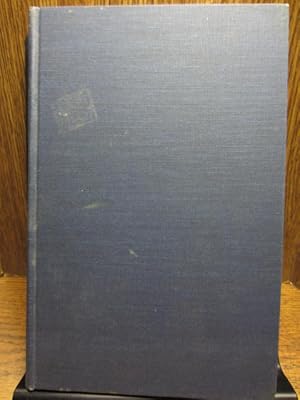

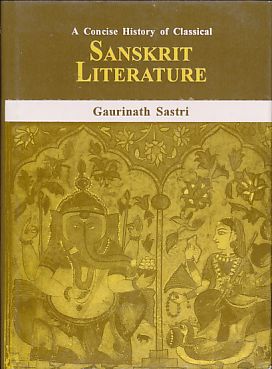
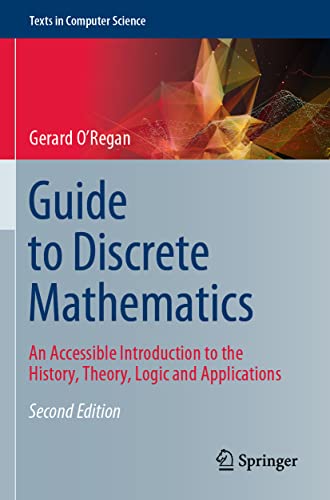

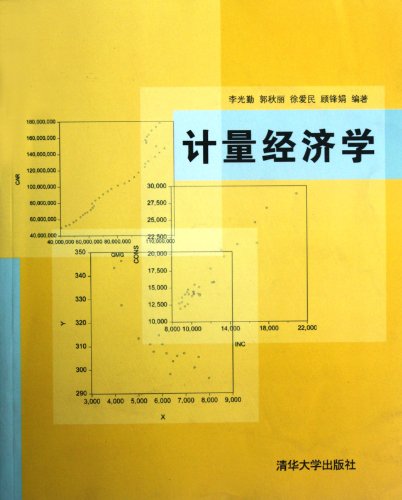
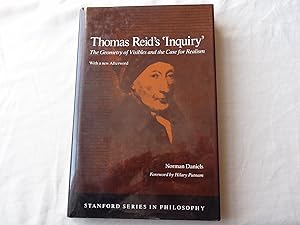

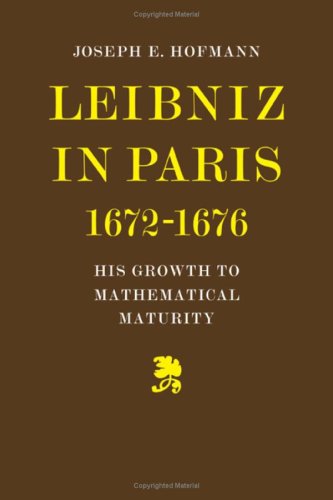


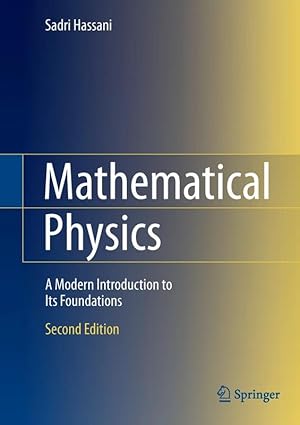
![Seller image for [3 vol.] The Islamic World: Past and Present. Associate Editors: Abdulaziz Sachedina, Tamara Sonn, John O. Voll. for sale by Fundus-Online GbR Borkert Schwarz Zerfaß](https://pictures.abebooks.com/inventory/md/md31148361302.jpg)

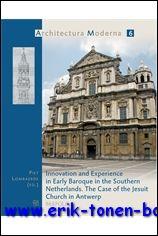
![Stock image for PAPPUS OF ALEXANDRIA: BOOK 7 OF THE COLLECTION [2 VOL.] Part I. Introduction, Text, and Translation; Part 2: Commentary, Index and Figures. Edited with Translation and Commentary for sale by Ancient World Books](https://pictures.abebooks.com/isbn/9780387962573-us-300.jpg)
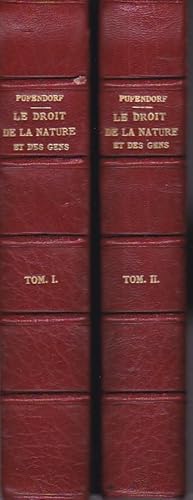
![Stock image for Warfare and the age of printing : catalogue of early printed books from before 1801 in Dutch military collections with analytical bibliographic descriptions of 10,000 works. Volume 1-3; Volume [4] : Indices. for sale by Kloof Booksellers & Scientia Verlag](https://pictures.abebooks.com/isbn/9789047425885-us-300.jpg)
